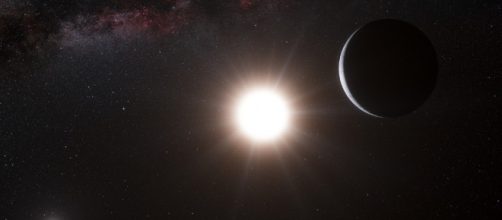Astronomers have discovered the first planet outside our solar system similar to Earth that has an atmosphere around it. This is the first time an atmosphere was detected around an exoplanet similar to our planet, according to the AFP news agency. The discovery was made public on Thursday in The Astronomical Journal.
Planet similar to our planet
Scientists explain that this discovery is an important step, even if they didn't find life on another planet yet. They say that it's the first time that they are detecting an atmosphere around a planet which has a mass and a size similar to Earth.
The exoplanet is named GJ 1132b and it's located 39 light years from Earth in the Vela constellation. However, the planet is about 16% larger than Earth and it's located on an orbit too close to its Sun -- a red dwarf -- to be habitable.
Giant temperatures on the surface of the planet
According to the astronomers, the temperature on the surface of the planet exceeds 250 degrees Celsius. Observations led scientists to believe that the atmosphere is rich in water or methane. However, more measurements with other powerful telescopes will be required to identify the chemical substances which are present in the exoplanet's atmosphere.
The scientists say that these types of stars -- red dwarfs -- are the most common ones, and the discovery of a planet with an atmosphere orbiting around this type of star system suggests that the conditions for the existence of life can occur very often in the Universe.
The study of the planet will be a priority for astronomers
This new discovery makes GJ 1132b a priority target for observations with the Hubble Space Telescope, with the European giant telescope observatory from Chile, or with the future James Webb Space Telescope -- which will be launched in 2018.
The team of researchers who made this new discovery, including astronomers from the Max Planck Institute for Astronomy in Germany, used the telescope European ESO/MPG in Chile to capture images of the Star GJ 1132 and measure the reducing light intensity of the exoplanet.
These measurements of the light absorption of the star allowed the researchers to determine the existence of an atmosphere. The existence of an atmosphere was unknown when it was first discovered in 2015.

